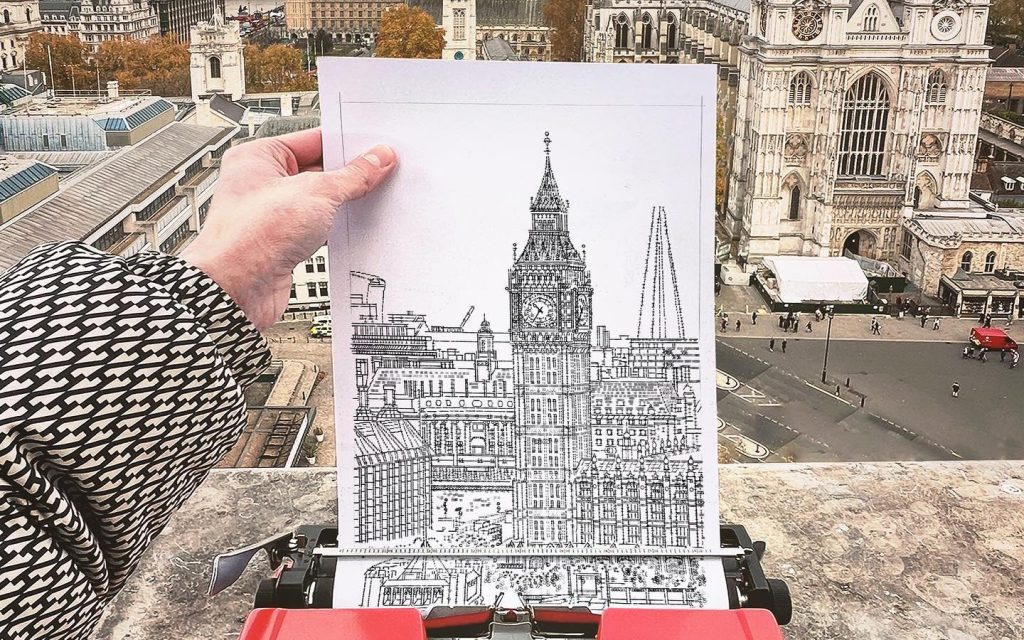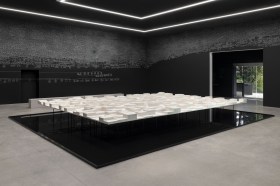Think typewriters are just slow and outdated ancestors to the sleek modern keyboard? Well, think again because London-based artist James Cook has been using them to create mind-blowing artworks that make one appreciate the elegance and intricacy of this yesteryear invention.
Instead of holding a pencil, Cook constructs his drawings entirely from letters, each stamped on by the typewriter in genius arrangements that meld into lines, curves and shapes. In an interview on The Morning Show in 2020 Cook explained that the technique was something he discovered while studying art in college. It was previously used by US artist Paul Smith (1921-2007), who had severe cerebral palsy that restricted his mobility. Using the typewriter’s lettered foundation to advantage, Cook also includes hidden phrases and messages in the works, only discoverable to those with an eye keen enough to pick them up from the complex imagery.
Cook is the perfect example of a young artist who has gained international recognition through social media, with over 334,000 followers on Instagram and 800,000 “likes” on his latest post of typewriter art ASMR (autonomous sensory meridian response). None of this came without hard work, however. At the age of 26, Cook has been invested in this method of creating images for a decade. In an Instagram post he revealed a recent image of London’s Royal Albert Hall took ‘the equivalent of two months work’. In it, Cook has embedded the names of the iconic venue’s famous performers.
Cook often works on or near the site of the subject of his works en plein air; for example, on a pavement near London’s St Pancras Station. In 2022, he was granted permission to work 60 metres above London’s streets – the rooftop of the Methodist Central Hall’s dome in Westminster – in order to recreate his view of Big Ben.
Using the same method he has also created portraits of famous artists and artworks, including Frida Kahlo, Vincent van Gogh and Leonardo da Vinci’s Mona Lisa, , as well as celebrities. Cook’s portrait of Tom Hanks revealed the actor and filmmaker as a fellow enthusiast of typewriters, with a collection of around 250 machines. The work incorporated extracts from Hanks’ debut novel, The Making of Another Major Motion Picture Masterpiece, as well as a collector’s wish list of typewriter models.
In 2022, Cook created what he hoped was the largest drawing made using a typewriter and submitted it to Guinness World Records. The two-metre piece equated to around 300 hours of typing and depicts a panoramic view of the London skyline.
His creations have begun to earn a place in art exhibition spaces, including a solo show at Wonky Wheel Gallery, Finchingfield in the UK and The Moot Hall, and participation in Outside the Box! When Machine Meets Art, currently on view at Taiwan’s Chimei Museum.
Read: Doodle dood offers lesson in individuality … and going viral
Cook has created more than 300 original works to date, using a collection of nearly 60 typewriters, which have mostly been donated to him by fans of his work. The artist’s website reveals, ‘He was recently asked to create a drawing of the late Queen Elizabeth II for a former royal household member, in exchange for a typewriter that was used in Buckingham palace by the Royal Clerk’.
While the late Paul Smith may have not imagined the impact his creativity would have on this young art student, Cook is heralding a renaissance with his typewriter works that are ‘worth a thousand words.’





